Pinders
The pinders, normally two of them, were appointed by the town council to gather roaming animals and deposit them in the town pound until the owners paid a fee for their release. The various presentments in the Leet records provide a glimpse of the pinders role as well as the uses the pound was put to. More often than not, any presentment that gives a ruling on the role also gives a fine if the ruling wasn't followed.
One of the presentments in February 1654 commented upon the requirement for cattle not to be released onto the marsh before 6am. Any earlier and the pinders should impound them or forfeit 12d. A similar presentment at the same court mentions geese that should be kept away from the marsh between the 25th March and the 29th September - presumably to protect the grazing since a presentment in April 1656 has the comment "destroyinge of ye Arbish [herbage] of ye marsh". An offender could be fined 20s for an offence or, if they tried to rescue any of the animals, the fine was 3s 4d for every goose.
A common complaint in the records was that of damage produced by "swyne in mens corne and grass" but went further in that swine seemed to be free to roam the streets. By the time of the October 1660 court it had got so bad that notice was given that all swine should be ringed within 5 days after notice. The default fine being 6d with half to the town and half to the pinder.
The pinders seem to have a difficult task in deciding ownership of various beasts put on the moor. Freemen had rights to the common but "stallengers" were denied this right and, in 1656, were fined 3s 4d for each animal found. Animals that had ailments would be refused access to the marsh by the pinders in order to avoid transmission of any disease.
Although not specifically associated with animals the pinders were given other requirements. February 1669 states that the pinders should "rake and gather the sticks and wrecke from of ye marsh and burne ye same, and spread ye Ashes, before ye xxth of Aprill next." Another presentment mentions opening a watercourse and this would be monitored by the pinders - presumably this was because the watercourse impinged on the marsh. The pinders in 1698 seem to have expanded their role in reporting rails being missing from cellers, rampires not repaired and middings being found in the middle of St. John's Weend.
The 1683 King/Kuerden/Strip map positions the pinfold somewhere near the Ship Inn (now the Ship & Giggles) on Fylde road. A combination of the map and the Leet records allows the map to be dated to 1683 since the map refers to a landowner, John Bray, living near the pinfold. The Leet records, after 1683, only mention his wife, widow Bray.
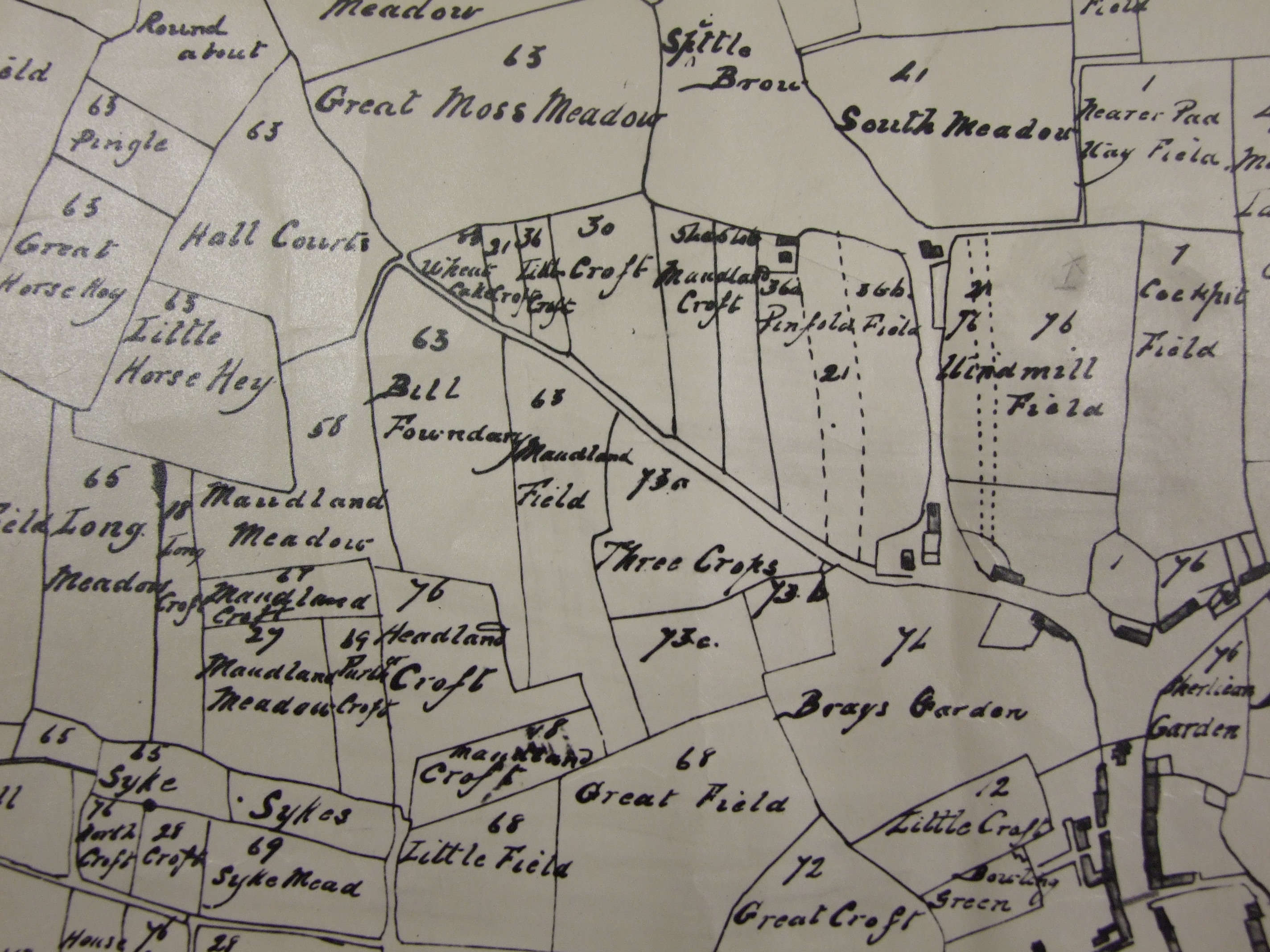
The position of the pinfold must have moved several times as the town grew. Presentments in 1691 and 1692 imply that the pinfold, at that date, lay close to Friargate barrs and the Lang map shows a pinfold field close to the end of Friargate - Friargate ending at the bottom right-hand corner of the map.
Several presentments also refer to this general area of Friargate barrs as being adjacent to the site of the pinfold.
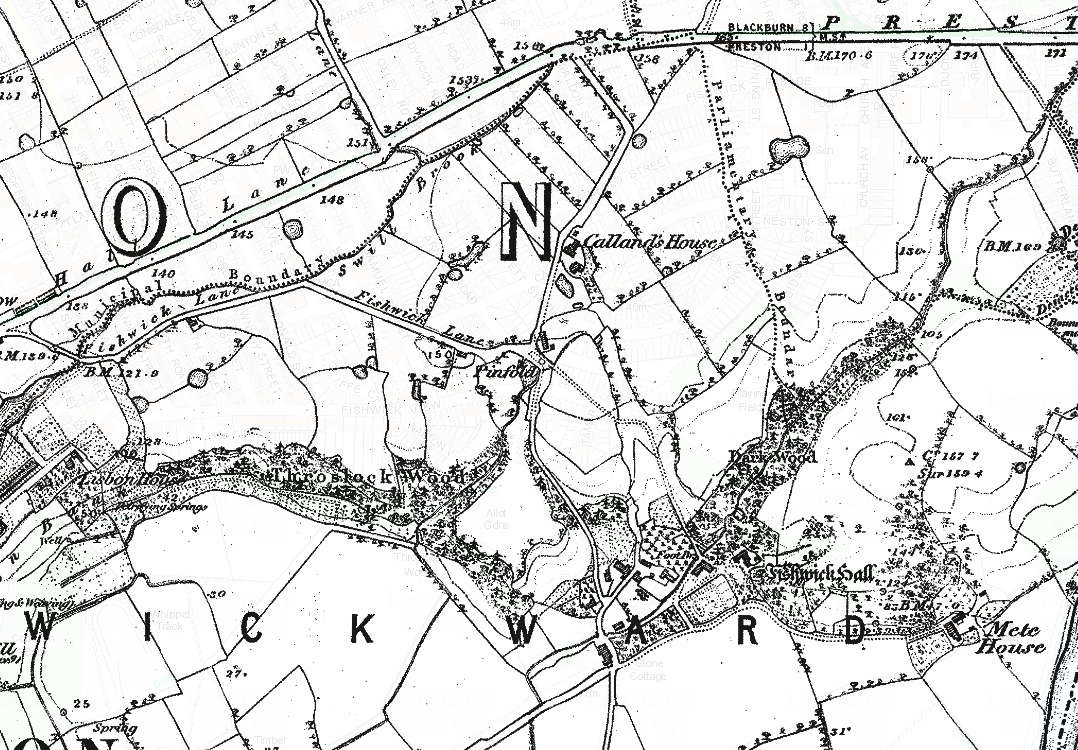
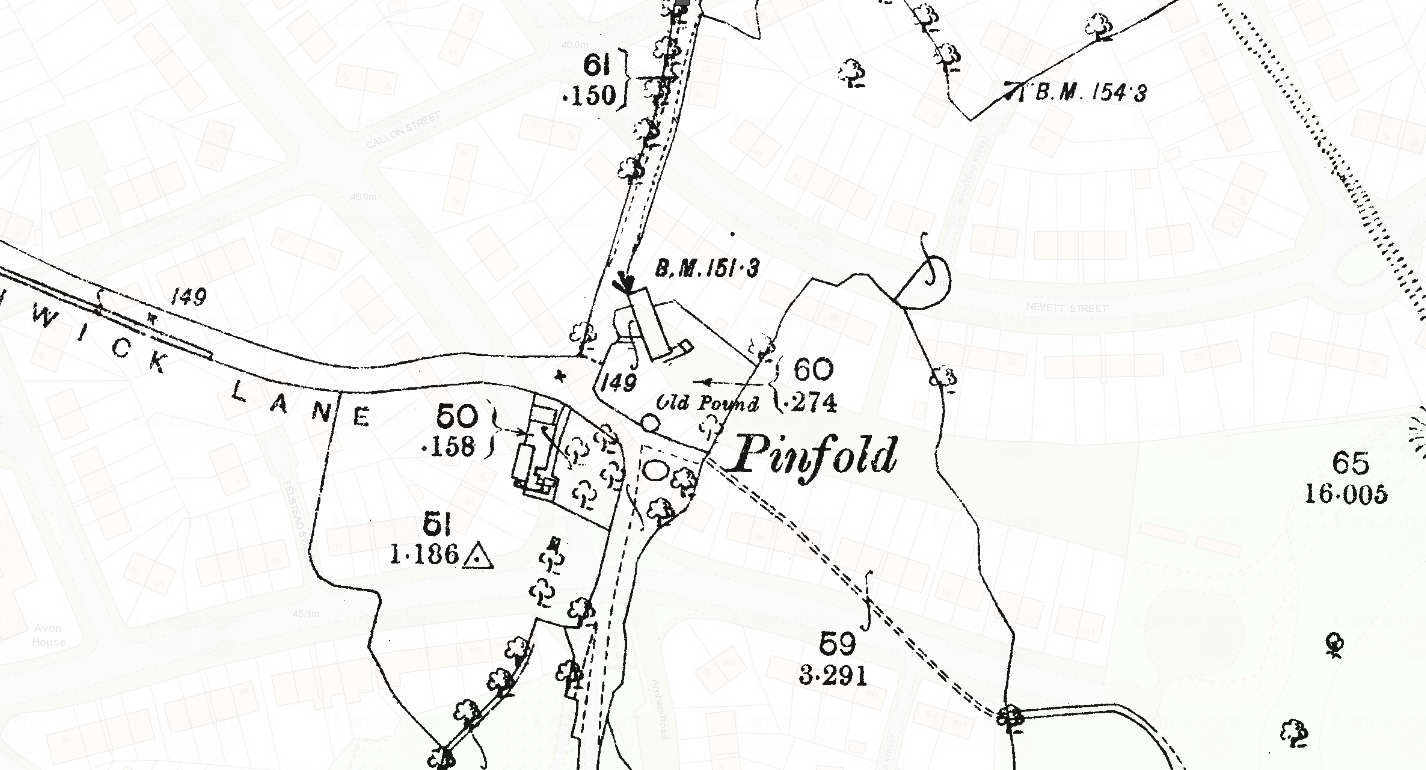
By the 1840's the OS map shows a pinfold between New Hall Lane and the Ribble - on what is now the Callan Estate. The second of the two maps gives more detail has an "old pinfold" and what appears to be a newer, larger, circular structure which is probably the new pinfold.
The structure of the pinfold is difficult to determine from the records. In 1655 there is an order for the bailiffs to repair the pinfold with "breecks". In February 1665 there is the presentment.
"The now balives shall cause a pticon (particition) wall erected to make a sepacon (seperation) wthin the pinfould to keepe sheepe from other Cattle from harme and desruccon and likewise for to rpair there in needfull places according to the 12th prsentmt of the last Jury of Leete at or before the 24th of June next upon paine of xxs."
Possibly the pinfold was made of wood prior to this. In 1755 the bailiffs were required to fix the door on the pinfold and in April 1761 a quite comprehensive presentment appears.
"The Bailiffes for not repairing the Pinfold there wants an Inner Door, repairs at the Outward Door, some Brick work, some paving, and the Rubbish & Dirt cleaning out Which We order to be done within thirty days after Notice or the said Bailiffes to pay 30s."
The first pinfold in the Ashton area appears on the ??? map near the end of Watery Lane.
The first edition Ordnance Survey map for Ashton shows a pinfold at, what is now, the corner of Mulgrave Avenue and Pedders Lane.
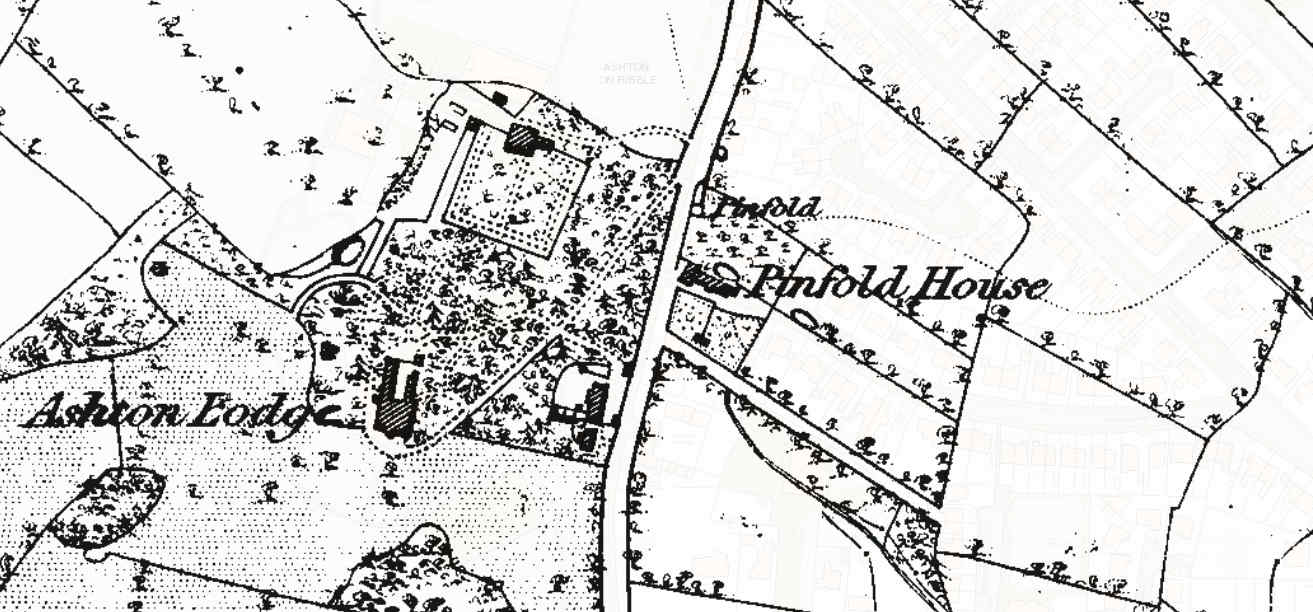
Ashton Pinfold
Another pinfold was created in the Fishwick area.

The Corporation Arms, Lune St., Preston acted as a pound well into the 20th Century.
Newspaper Reports
In 1831, James Eastham, the pinder, fell down some stairs at pinfold house on the moor and died.
1845 Joseph Brown (see below) was mentioned as being a Constable but was to old to continue his duties. His role as pinder was to continue.
1847 "ATTEMPT TO RESCUE CATTLE FROM THE PINDER. Yesterday, William Bond was charged by Joseph Brown with rescueing a number of Sheep and Cattle from the Pinfold. He was ordered to pay all costs, to pay the expenses of a new door in the place of the one he broke, and to ask the pardon of the Pinder.
1848. Possible sale of the pinfold and nearby land.
Article mentions removing the present pinfold, death of late pinder and selling old pinfold. Duties of pinder discussed.
1856. John Threlfall, pinner of Preston pinfold charging James Harrison with non-payment of cost of keeping a horse.
1859. Mentions the "Marsh End" pinfold. Daniel Greenhalgh V George Rawcliffe for not feeding two cows in the pinfold. The pinder is John Threlfall. Gives the impression that the pinfold was near Ribbleton Lane which ties in with the OS maps.
1860. Mentions Pinfold Lane House in Pinfold Lane opposite Ashton Park occupied by James Rutter.
Pinfolds can still be found around the country but, more often than not, reconstructed. The photograph below is of the Hope, Derbyshire pinfold. It was in limited use until, at least, 1967 and the notice displays rules and regulations in place in 1947. These are also transcribed below and there is no guarantee that the Preston "rules" were the same and that they weren't modified over time.
Hope Pinfold - Rules for the Pound Keeper
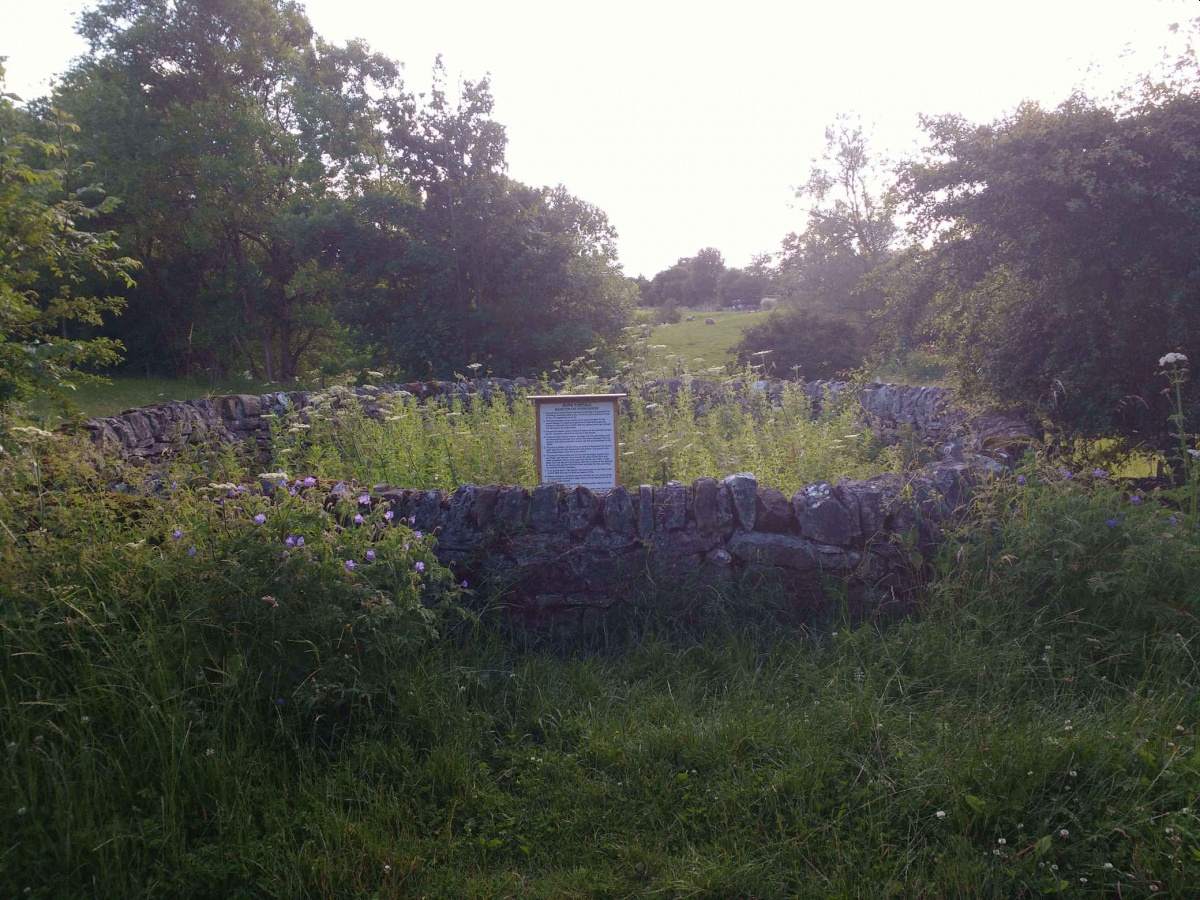
1. Any person impounding an animal or animals is answerable for providing food and water every 12 hours, and is liable to a fine of 20/- for neglecting to do so.
2. The pound keeper is not liable, but it would be best for the pound keeper to make arrangements to feed and water any animal or animals impounded, with the person who has brought the animals to be impounded.
3. The pound keeper cannot refuse to impound any animal brought to him. Animals must not be tied up in the pound.
4. If any animals shall receive damage from the pen being unfit for impounding animals, the owner can claim damage from the person who impounded the animal, but the pound keeper is not liable.
5. The pound keeper cannot bring an action if the pound be broken open and the animals liberated by the owner. The person impounding them must bring the action.
6. The person impounding any animal and having to supply food and water can receive up uo double the value of the food and water supplied, and to make payment certain can, after 7 clear days from the day of impounding, sell one or more of the animals to receive payment of such food, and also for the pounding fee and the fine for trespass.
7. If an animal dies in the pound, the impounder is liable if the animal died through not fault or neglect of his.
8. Before selling an animal to recover the fine, etc. for impounding, the impounder must give 3 days notice of his intention to do so (Public printed notice)
9. The animal must be sold openly at some public market for the best price it will fetch.
10. Under the Cruelty to Animals Act, any person who impounded the animal negelct to fee and water it, and person my enter into the pound and do so, and can receive the cost of such from the owner before he can take it away.
(RULES ISSUED IN 1947 WHEN IMPOUNDING OF STOCK WAS FALLING INTO DISUSE).
The pinfold at Waltham St. Lawrence, near Maidenhead consisted of four corner posts formed by living trees which were then connected by stout wooden palings to form the enclosure.
